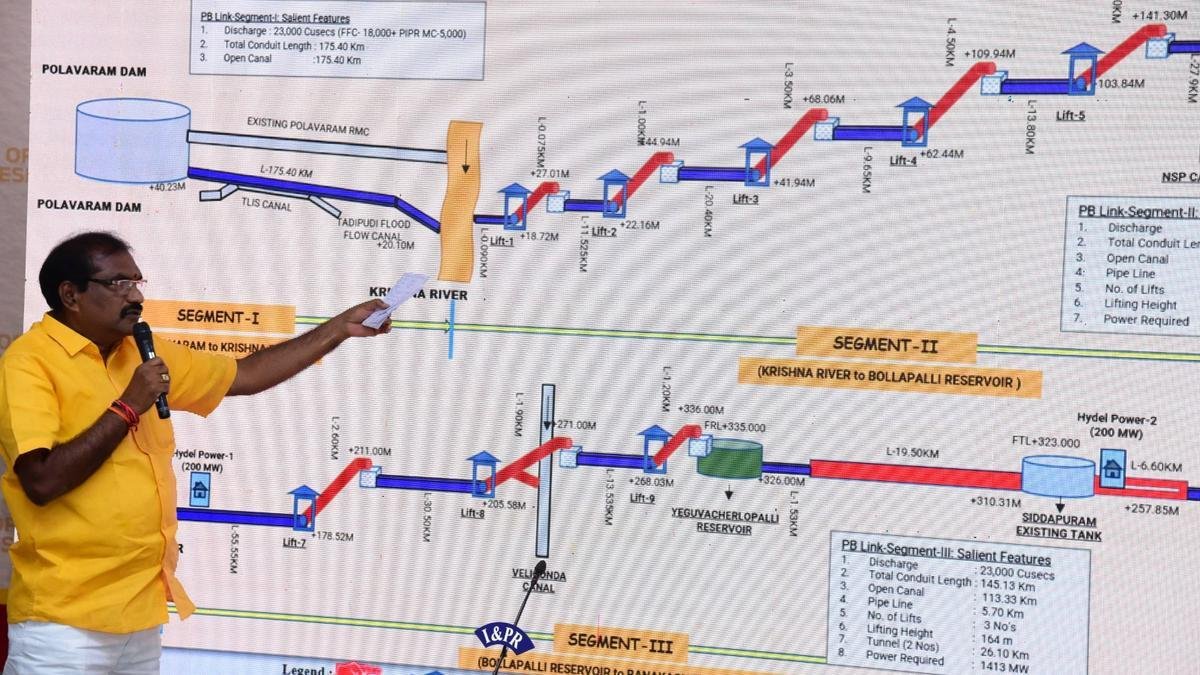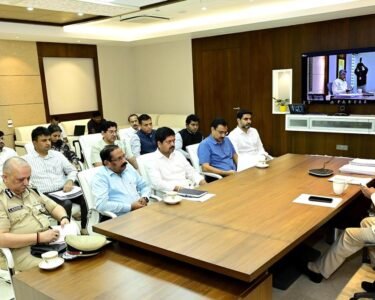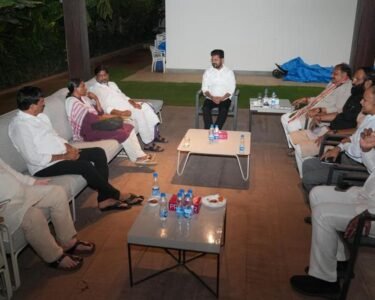In a significant development for Andhra Pradesh’s irrigation infrastructure, the Expert Appraisal Committee (EAC) under the Ministry of Environment, Forest and Climate Change (MoEFCC) convened a crucial meeting to deliberate on the Polavaram–Banakacherla water linkage project. The session was attended by top central and state-level officials, technical experts, and representatives from the Water Resources Department.
The EAC meeting aimed to evaluate the Environmental Impact Assessment (EIA) and feasibility of the project before granting further clearances. The project, part of the broader Polavaram irrigation scheme, is considered vital for enhancing agricultural productivity, addressing water scarcity, and boosting the livelihoods of farmers across Rayalaseema and surrounding regions.
Project Overview: Lifeline for Rayalaseema
The Polavaram–Banakacherla project is envisioned as an ambitious interlinking water diversion system. It seeks to channel surplus Godavari river water from the Polavaram reservoir to the drought-prone Rayalaseema region via a gravity-based canal network.
The project involves:
- Construction of an extensive canal system covering over 400 km
- Integration with the existing Banakacherla head regulator
- Water storage, pumping, and diversion systems at key locations
- Supply of irrigation water to nearly 7–8 lakh acres of farmland
- Provision of drinking water to over 30 lakh people across districts
It is part of the Godavari–Krishna–Penna river interlinking vision, which aims to optimize river water utilization across regions with uneven rainfall patterns.
Environmental Assessment Takes Center Stage
During the EAC meeting, primary focus was laid on the environmental impact of the project, especially the potential effects on:
- Forest and wildlife ecosystems
- Groundwater balance and soil health
- River flow dynamics and aquatic biodiversity
- Displacement of people and rehabilitation plans
Experts stressed the need for a comprehensive Environmental Management Plan (EMP). They also advised that the project should adhere strictly to the Forest Conservation Act, 1980, and Environmental Protection Act, 1986.
The EAC sought detailed clarifications from the project proponents on:
- Land acquisition process
- Wildlife and forest clearance status
- Mitigation strategies for ecological loss
- Plans for afforestation and compensatory measures
Social Impact and Rehabilitation
A key agenda in the meeting was the social impact assessment (SIA) of the project. Several villages and tribal habitations along the proposed canal route are likely to be affected. The EAC insisted on:
- A transparent rehabilitation and resettlement (R&R) plan
- Fair compensation for displaced families
- Livelihood restoration programs for tribal and rural communities
- Regular consultations with local stakeholders
Officials assured the committee that all affected families will be rehabilitated in a time-bound and humane manner, as per the norms of the Right to Fair Compensation and Transparency in Land Acquisition Act, 2013.
Technical and Engineering Challenges Highlighted
The technical aspects of the project were also reviewed in detail. Engineers explained the project’s design capacity, command area, water balancing models, and the long-term impact on regional hydrology.
EAC members raised concerns about:
- Potential seepage losses due to terrain
- Cost of pumping operations over long distances
- Coordination between multiple canal systems
- Seasonal water availability from Polavaram backwaters
The committee advised an independent third-party validation of the technical designs and modeling studies to ensure accuracy and efficiency.
Alignment with National River Interlinking Vision
The Polavaram–Banakacherla link is considered a strategic component of India’s National River Linking Project (NRLP), aimed at resolving water imbalances across states. The EAC acknowledged the project’s significant potential to transform drought-hit regions in Andhra Pradesh into agriculturally prosperous areas.
Experts noted that such large-scale projects must strike a balance between development and ecological sustainability, and emphasized that inter-basin transfers must be designed with utmost caution.
State Government’s Commitment to Fast-Track Progress
Officials from the Andhra Pradesh government presented the project’s current status and roadmap. They stated:
- Land surveys and identification of affected zones are ongoing
- Detailed Project Report (DPR) is under revision based on EIA findings
- Efforts are being made to ensure green clearances without delays
- A nodal officer has been appointed to coordinate with MoEFCC and NITI Aayog
The state government has reaffirmed its commitment to ensure that the project serves both economic and ecological interests in a balanced manner.
Way Forward: EAC Recommends Key Actions
At the end of the meeting, the EAC recommended several action points before the next phase of clearance can be considered:
- Submission of final EIA/EMP and SIA reports
- Comprehensive R&R strategy with stakeholder consultations
- Updated forest and wildlife clearance documents
- Clarification on groundwater recharge and soil conservation plans
- Periodic monitoring mechanisms to track progress and compliance
The EAC will review the updated documents and site-specific plans in its next session before deciding on the final environmental clearance.
Conclusion
The EAC’s proactive engagement in the Polavaram–Banakacherla project marks a crucial step toward its realization. If implemented responsibly, this project could revolutionize irrigation access in Rayalaseema, ensure water security, and uplift rural livelihoods—while maintaining a strong emphasis on environmental and social responsibility. The next few months will be decisive in shaping the future of this landmark water infrastructure initiative.







